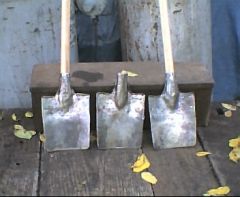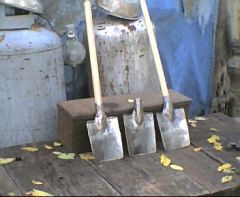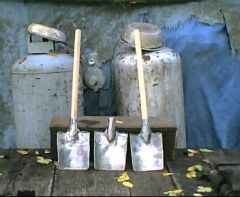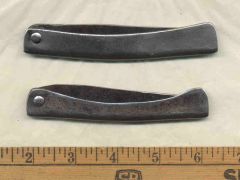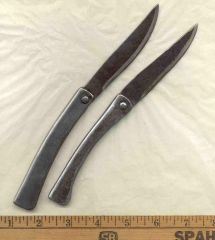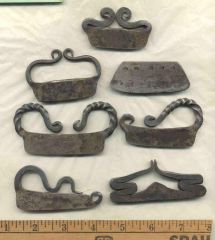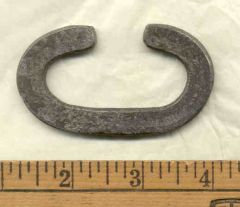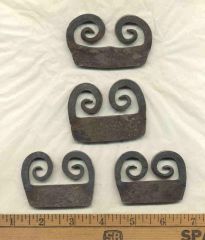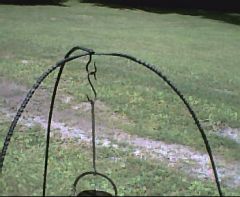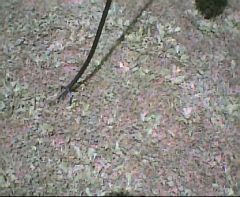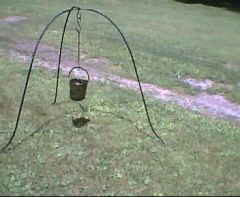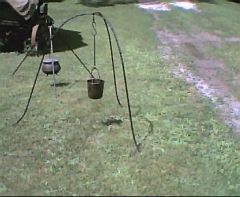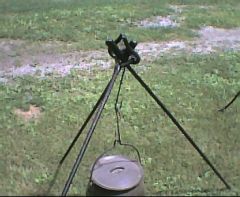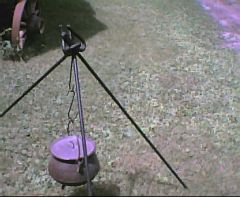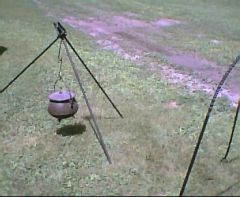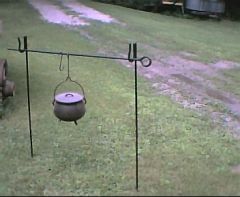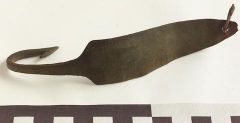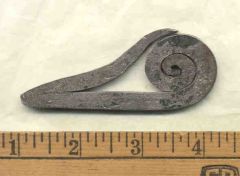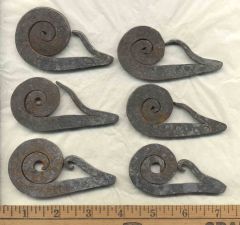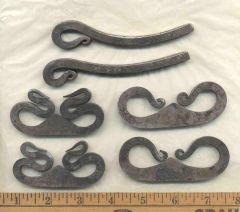-
Posts
473 -
Joined
-
Last visited
Contact Methods
-
Website URL
http://www.angelfire.com/journal2/firefromsteel
Converted
-
Location
NE Iowa - USA
-
Interests
Living History - and the tools used in everyday life over the centuries
-
Occupation
Blacksmith
Recent Profile Visitors
The recent visitors block is disabled and is not being shown to other users.
-
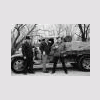
16th Century German Reenactment Utensils
Mike Ameling replied to Dick L.'s topic in Blacksmithing, General Discussion
Sonn's book is pretty expensive. Check for it through Inter-Library-Loan. Also check out Plummer's book Colonial Wrought Iron. Or Neumann's Early American Antique Country Furnishings or Collector's Illustrated Encyclopedia of the American Revolution. The big problem with these books is the later time period. A lot of stuff did carry forward, but a lot also didn't. The simplest advice would be to look at a good book of 16th century iron work, and then think ... simpler or plainer. The fancy stuff survived and ended up in collections, museums, and books. The common stuff was just too ... common. 1500's is pretty early for "eating" forks, and those would be 2-tined. Basic table utinsels would be a knife and a spoon. Dutch Oven or Bake Kettle. Tricky terms. First, forget those cast iron "dutch ovens". Those only started to come into use about the time of the Civil War - mid 1800's. But mostly late 1800's on into the 1900's. The early version of this was the French Tourtiere. The "bake kettle" was basically a large pot with a lid. But the ... term ... changed a lot in its definition, just like the "dutch oven" term. Hanging skillet - picture a round sheet iron pan with a fixed bale Peel (hearth shovel) - two different things - a peel is a cooking spatula while a heath shovel is just that - a shovel Trivets - generally would be tall for cooking over coals Hanging S hooks - a wide variety of possibilities Spider (skillet on legs) - sheet iron pan with long legs - for cooking over a fire - can be either flat bottomed or rounded Bake kettle or Dutch oven - see above and search for a Tourtiere This should give you a start. Mikey -
A few people use those floating water tank heaters for their quench tanks. They are designed to keep a water tank open for animals to drink. My folks use one to keep a bird-bath open over the winter. If my shop was in a slightly different place, I would have the spring piped in and through the quench tub to keep it all open. I will keep my oak barrel quench tub full with an old 2x4 stuck in it until the ice gets to be more than a thin 1 inch layer. The 2x4 helps keep the ice from punching out the sides/bottom - at least for a while. Over the years, I've had ice punch out the bottom of two tubs. Plywood to wall in my shop? My tools wouldn't know how to react! They are just happy not to have snow PILED on top of them! Mikey
-
When it is -20 degrees outside (Farenheit, not that euro-trash celsius), I wear insulated coveralls and pack boots. I pour out my quench pot and refill each time. And I place a heated bar on top of the anvil face before I start. My "shop" is a couple tin roofing sheets and plastic tarps hanging down the sides to within 3 feet of the ground. And just a ground floor. Yeah, it is also ... breezy. Simple shop. Simple steps. And life goes on. Mikey - that grumpy ol' German blacksmith out in the Hinterlands
-

Some Viking era flint strikers
Mike Ameling replied to Mike Ameling's topic in Metal Sculpture & Carvings
Tiss something I have contemplated. Along the likes of a ... Sketchbook ... in style, with styles/shapes by time periods and cultures. Even some "tips" on making each style. But it also is a pretty small ... marketplace. There are not that may people interested in such a book. I had to work hard to find the couple books already written. And they are basically "collector's" type books. It's hard to justify the work writing/publishing to be able to sell only a couple dozen books. Self-publishing helps, but the demand just isn't there. I would love to buy such a book. But writing/publishing one just isn't justified right now. Plus my drawing skills are lacking ... Mikey -
The old time farm blacksmith near me would always make ... hitch pins ... when he had spare time. 3/4 round stock, slight tapered point, and an eye loop. He had a bin he tossed them into. When things were slow, he filled that bin. And then they were always ready to buy when a farmer came in for a repair or blade sharpening. It kept him busy during those "slow times", and gave him a constant small income. By the end of summer/fall, the bin was pretty empty. Mikey
-

Wanted treadle grinder or just stone
Mike Ameling replied to Country_boy's topic in Blacksmithing, General Discussion
Plus a pedal grindstone is a SLOW grinding stone. Stones from modern companies are generally made for much higher speeds. The classic pedal grindstone is a soft "sandstone". Around here in NE Iowa, they show up pretty regularly at flea markets and in antique stores. 20 inch wheels or larger are pretty common. And you can often get them with metal or wood frameworks to hold them and sit on while sharpening a scythe or axe. So check out the local antique stores and flea markets. There is not a lot of demand for them - other than with the full stand. The simple stones should be pretty affordable. Mikey -

twin cities summer assistant
Mike Ameling replied to Curumo's topic in Blacksmithing, General Discussion
Check out the Guild of Metalsmiths. A web search should lead you to their web site. They are a fairly large blacksmithing group kind of centered around the Twin Cities. They hold regular meetings and hammer-ins. Many have shops in or near the Twin Cities. So get in touch with them. They will be a great place to start. Mikey -

Some Viking era flint strikers
Mike Ameling replied to Mike Ameling's topic in Metal Sculpture & Carvings
Here is a picture (scan) of some Irish flint strikers I made this week. The bottom 3 are the Irish ones, the top one is a Burgundian flitn striker. Note the similarities. That Burgundian one has that little "peak" in the center, while the Irish ones are flat inside. The Burgundian ones date from the 1400's on up into the 1600's. They also show up in lots of family Crests. The Irish ones are based on originals in a British museum book. They date them to the 18th century - 1700's. The influence came from their dealings with France. And here are some more flint strikers to offer more inspiration. The bottom two are Roman era strikers - 1st to 3rd century. These were never North American shapes/styles of strikers. The next two above are based on a French painting dated 1566. They are the Nose and Ear of a fire creature in the painting. The top right flat one is made to be sewn into a leather pouch along its bottom. The main influence for them is China and Tibet, but there were a few Medieval ones in Europe - probably from trade with the far East. They were never really found in North America until modern times. The top left and very top strikers are 1700's trade styles of British/Dutch/French/Italian origin (they all "borrowed" ideas from each other). Just a few more flint striker styles/shapes to help inspire your own work. But don't get discouraged. Just keep in mind this one British/Welsh striker dated 1590. Just a simple basic striker. (and surprisingly hard to get to turn out looking right) Have fun tinkering, and ... feeding ... this blacksmithing addiction! Mikey - that grumpy ol' German blacksmith out in the Hinterlands -

Some Viking era flint strikers
Mike Ameling replied to Mike Ameling's topic in Metal Sculpture & Carvings
That "flint" on those magnesium bar fire starters is a rod made up of Ferro-Cerrium. That is the same material used under the wheel of a BIC lighter. All you have to do with that rod is ... scrape ... it with a hard/sharp edge, and you will get tons of hot sparks! So a traditional flint striker doesn't have much to do with them. One of the best "scrapers" to use with those ferro-cerrium rods is to just snap off a chunk from a small hacksaw blade. That sharp edge will give you tons of sparks with those fire starting rods. A traditional flint striker is different. You need a sharp edge on a flint like rock to chip/dig out little bits of that hardened tool steel. Chipping/digging out those little bits of hardened tool steel heats them up enough that the carbon in them burns. That's the sparks you see. There are a number of original flint strikers in the one British museum book that have the ends tapered and curled like yours. They are dated from the late 1700's to early 1800's. And when you start to look at a bunch of originals, you do start to notice how they may look symmetrical, but are just a little ... off. The tapers can vary a bit. The length drawn out can also vary. And curves sometimes just don't match that well from one side to the other. Just some of those normal blacksmithing processes. Riveted sheet iron pots. There is no "sealer" added to the joints. They seal up naturally from food being cooked. It gets into that seam and plugs it. I start it out by filling it with water and swirling in some corn meal, oatmeal, or flour. As the water seeps through the joints, it draws that meal in with it. And that starts sealing the joints. It also starts some "rust" in those joints. As you cook in it, that adds more to the sealing of the joints. I'll see if I can post some pics of some Irish flint strikers I just finished. Mikey - that grumpy ol' German blacksmith out in the Hinterlands -
I've thought about forging up a swage block from thick enough iron so it could lay flush on my anvil, but just haven't taken the time. Especially when a shallow hollow in the end grain of a block of Oak works so well. Yes, it does slowly char deeper in use, but a replacement is quick/easy to make. So the time to make an iron one just hasn't been a priority. Mikey
-

Looking for...square head maching bolts
Mike Ameling replied to wolfshieldrx's topic in Tools, general discussion
The people restoring old farm machinery and tractors love Fastenal for their square-headed bolts. The hex-head ones just don't ... look right ... on old farm machinery. Mikey -

Upgrade to ALO (anvil Like object)
Mike Ameling replied to Dano50's topic in Anvils, Swage Blocks, and Mandrels
I would be a little less concerned about making some version of a horn on your "anvils". With a little practice, you can do the same bends using a small BICK, bending forks, or just over the edge of your anvil. Personally I seldom use the horn on my anvil. It is nice to have, but I just tend to use other things instead. A hardy hole. Most any hardy can also be used in your vice. Just clamp it in tight. Of make a modified base for a hardy - in the form of a U shaped plate that sets down over your "anvil". Make sure that it is of thick enough stock, and that the side parts stick down far enough to support any twisting. You could also weld on a couple thick chunks of iron onto that plate to form a deep enough "hole" to slip your hardy into. Just some options to get around drilling/grinding/filing/swaging out a square hardy hole in thick steel. If you look around at a scrap yard or farm implement store for a tractor drawbar, you will be surprised at how well it can work as a small/light anvil. And they already have several round holes through them. And a bulldozer drawbar is even bigger/thicker! Just some thoughts to ponder. Mikey - that grumpy ol' German blacksmith out in the Hinterlands -

Upgrade to ALO (anvil Like object)
Mike Ameling replied to Dano50's topic in Anvils, Swage Blocks, and Mandrels
I would be a little less concerned about making some version of a horn on your "anvils". With a little practice, you can do the same bends using a small BICK, bending forks, or just over the edge of your anvil. Personally I seldom use the horn on my anvil. It is nice to have, but I just tend to use other things instead. A hardy hole. Most any hardy can also be used in your vice. Just clamp it in tight. Of make a modified base for a hardy - in the form of a U shaped plate that sets down over your "anvil". Make sure that it is of thick enough stock, and that the side parts stick down far enough to support any twisting. You could also weld on a couple thick chunks of iron onto that plate to form a "hole" to slip your hardy into. Just some options to get around drilling/grinding/filing/swaging out a square hardy hole in thick steel. If you look around at a scrap yard or farm implement store for a tractor drawbar, you will be surprised at how well it can work as a small/light anvil. And they already have several round holes through them. Just some thoughts to ponder. Mikey - that grumpy ol' German blacksmith out in the Hinterlands -
That long term storage should not hurt it. Only if other stuff got in/on it to contaminate it. Heating anthracite coal does vary a lot. One other thing with some varieties is the oil that bubbles out of it. That does help bond it together, but does leave some oily residue on your work. And more clinkers. You can use it for forging. The heat will be different and a little less. But that can be adjusted for. It also can be mixed in to help extend your good coal supply. It all depends upon the work you are doing. And you could always re-sell it to some of the fancy landscapers. Some have started using stoker coal instead of gravel for landscaping around plants. They love that black shiny look! Mikey

